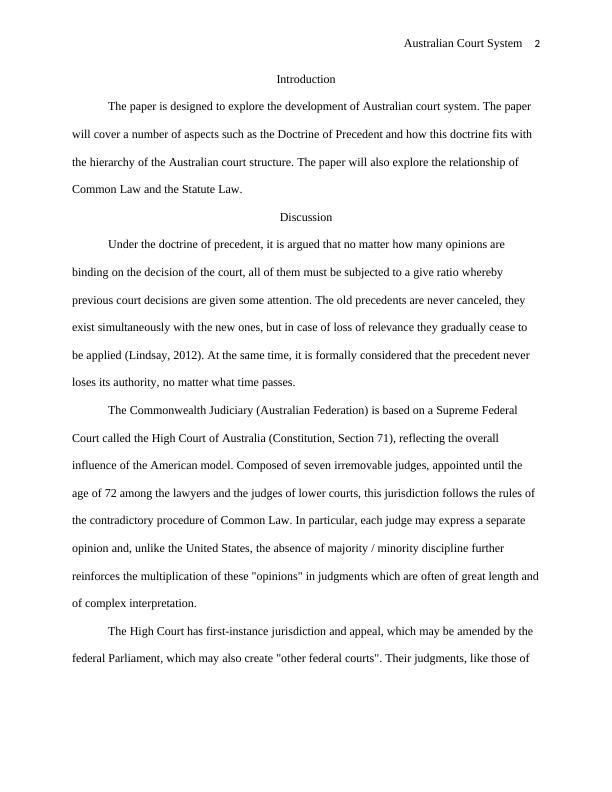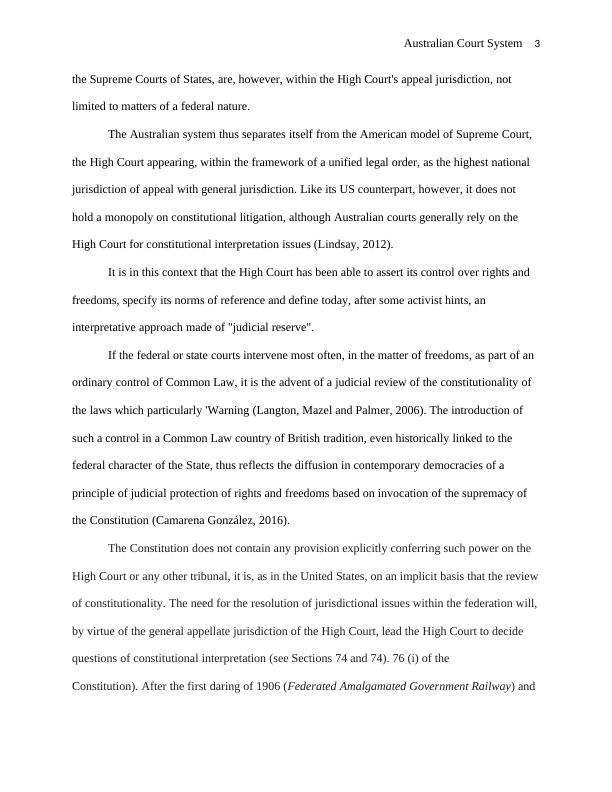Ask a question from expert
Assignment on Development of Australian Court System PDF
8 Pages2183 Words119 Views
Added on 2021-11-21
About This Document
The paper is designed to explore the development of the Australian court system. The paper will cover a number of aspects such as the Doctrine of Precedent and how this doctrine fits with the hierarchy of the Australian court structure. The paper will also explore the relationship of Common Law and the Statute Law. Under the doctrine of precedent, it is argued that no matter how many opinions are binding on the decision of the court, all of them must be subjected to a give ratio whereby previous court decisions are given some attention.
Assignment on Development of Australian Court System PDF
Added on 2021-11-21
BookmarkShareRelated Documents
End of preview
Want to access all the pages? Upload your documents or become a member.
The Doctrine of Judicial Precedent - PDF
|4
|1786
|283
US Judicial System and Constitutional Law
|4
|767
|217
American Judicial Review System. Assessment
|6
|1226
|16
SIGNIFICANCE OF JUDICIAL ADMINISTRATION
|12
|3376
|21
Constitution and Administrative Law
|7
|1291
|146
Construction Law: Legal System and Contract
|13
|3867
|338


